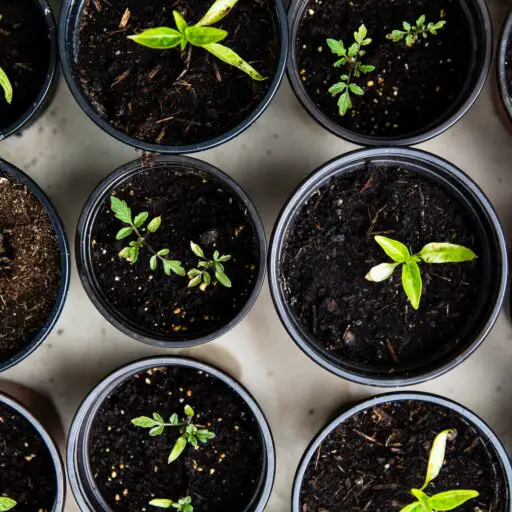Support our educational content for free when you purchase through links on our site. Learn more
Quick Answer: Community gardens have several goals and objectives, including promoting food security, utilizing urban spaces, reducing carbon footprint, improving community health, and fostering social capital. To achieve these goals, community gardens require organizing a community of people, designing and building the garden, and implementing best practices. By following these steps, you can create a thriving community garden that benefits everyone involved.
Have you ever wondered what the goals and objectives of a community garden are? 🤔 Community gardens are more than just plots of land where people grow plants. They serve a variety of purposes and have numerous benefits for individuals and communities. In this article, we will explore the goals and objectives of community gardens, provide tips and facts to help you create a successful garden, and answer frequently asked questions. So, let’s dig in and discover the world of community gardening! 🌿
Table of Contents
- Quick Answer
- Quick Tips and Facts
- Background: What is a Community Garden?
- Why Community Gardens?
- Organize a Community Garden
- Find a Community of People
- Organize the People
- Best Practices for Community Gardens
- Design a Garden
- Find a Site
- Location Considerations
- Landowner Considerations
- Build a Garden
- Amend the Soil
- FAQ
- Conclusion
- Recommended Links
- Reference Links
Quick Answer
Community gardens have several goals and objectives that contribute to the well-being of individuals and communities. Here are the main goals and objectives of community gardens:
✅ Promote Food Security: Community gardens help combat food insecurity by providing individuals and families with access to fresh, nutritious produce. They allow people to grow their own food and reduce their reliance on expensive grocery stores.
✅ Utilize Urban Spaces: Community gardens make use of underutilized urban spaces such as vacant lots, rooftops, and abandoned properties. By transforming these spaces into productive gardens, communities can maximize the potential of their surroundings.
✅ Reduce Carbon Footprint: Growing food locally in community gardens reduces the need for long-distance transportation, which in turn reduces carbon emissions. By promoting local food production, community gardens contribute to a more sustainable and environmentally friendly food system.
✅ Improve Community Health: Community gardens encourage physical activity and provide opportunities for people to connect with nature. By growing and consuming fresh produce, individuals can improve their nutrition and overall well-being.
✅ Foster Social Capital: Community gardens bring people together and foster a sense of community. They provide a space for people to interact, share knowledge, and build relationships. Community gardens can strengthen social ties and create a sense of belonging among participants.
By achieving these goals and objectives, community gardens play a vital role in creating healthier, more sustainable, and connected communities. 🌻
CHECK PRICE on: Community Garden Supplies | Gardening Tools | Seeds | Planters | Compost | Garden Fertilizers
Quick Tips and Facts
Before we dive deeper into the goals and objectives of community gardens, here are some quick tips and facts to keep in mind:
✅ Sunlight is Key: Most vegetables and fruits require 6 to 8 hours of full sunlight daily for optimal growth. When selecting a site for your community garden, make sure it receives adequate sunlight.
✅ Consider Raised Beds: Raised beds offer several advantages, including better drainage, improved soil quality, and easier access for people with mobility issues. Consider incorporating raised beds into your garden design.
✅ Plan Garden Paths: To prevent soil compaction and make maintenance easier, plan garden paths between the beds. Use materials like wood chips or gravel to create durable and accessible paths.
✅ Assess Soil Quality: Before building your garden, it’s essential to assess the quality of the soil. Conduct soil tests to check for contaminants and determine if any amendments are necessary for healthy plant growth.
✅ Watering and Irrigation: Ensure your community garden has access to a reliable water source. Consider installing irrigation systems or rainwater harvesting systems to minimize water waste and make watering more efficient.
Now that we have covered some quick tips and facts, let’s explore the goals and objectives of community gardens in more detail.
Background: What is a Community Garden?

Community gardens are spaces where individuals, families, or groups come together to grow plants, vegetables, and fruits. These gardens are typically located in urban areas and are managed collectively by the community. The American Community Gardening Association defines community gardens as “community-managed open spaces where people grow food, flowers, and herbs, and engage in other horticultural activities.”
Community gardens have a long history and have been present in various cultures around the world. They serve as places for people to connect with nature, grow their own food, and build a sense of community. These gardens can be found in neighborhoods, schools, parks, and other public spaces.
Why Community Gardens?
Community gardens serve multiple purposes and offer numerous benefits to individuals and communities. Let’s explore some of the reasons why community gardens are important:
✅ Combat Food Insecurity: Community gardens help address food insecurity by providing individuals and families with access to fresh, healthy produce. They empower people to take control of their food supply and reduce their reliance on external sources.
✅ Utilize City Resources: By transforming underutilized urban spaces into productive gardens, community gardens make efficient use of city resources. Vacant lots, rooftops, and abandoned properties can be repurposed to create vibrant green spaces that benefit the community.
✅ Reduce Food Travel Distance and Carbon Footprint: Growing food locally in community gardens reduces the distance food needs to travel from farm to plate. This reduces carbon emissions associated with transportation and contributes to a more sustainable food system.
✅ Boost Local Economy: Community gardens can have a positive impact on the local economy. They create opportunities for entrepreneurship, such as selling excess produce or value-added products. Additionally, community gardens can attract visitors and contribute to the overall vitality of a neighborhood.
✅ Improve Community Health: Engaging in gardening activities promotes physical activity and provides mental health benefits. Community gardens offer opportunities for exercise, stress relief, and connection with nature. Consuming fresh produce from the garden also improves nutrition and overall well-being.
✅ Create Social Capital: Community gardens bring people together and foster a sense of community. They provide a space for people to connect, share knowledge, and build relationships. Community gardens can strengthen social ties and create a sense of belonging among participants.
Organize a Community Garden
To achieve the goals and objectives of a community garden, it’s essential to organize a community of people who are passionate about gardening and community development. Here are the steps to get started:
Find a Community of People
The first step is to find a community of people who are interested in starting a community garden. Here are some ways to connect with potential gardeners:
✅ Talk to People You Know: Reach out to friends, neighbors, and colleagues who might be interested in gardening. Spread the word about your community garden idea and see who wants to get involved.
✅ Identify Neighborhood Groups: Look for existing neighborhood groups, such as homeowners associations or community organizations, that might be interested in supporting a community garden. Attend their meetings or events to share your vision and gather support.
✅ Make Flyers and Distribute Them: Create flyers or posters advertising your community garden project. Hang them up in local businesses, community centers, libraries, and other public spaces where people are likely to see them.
✅ Take Flyers Door to Door: Take a proactive approach by going door to door in your neighborhood and sharing information about the community garden. Knock on doors, introduce yourself, and explain the benefits of the garden to potential participants.
✅ Use Social Media: Leverage the power of social media platforms like Facebook, Instagram, and Nextdoor to spread the word about your community garden. Create a dedicated page or group where people can join and stay updated on the progress of the garden.
Organize the People
Once you have gathered a community of people interested in the community garden, it’s important to organize and establish roles and responsibilities. Here are some key considerations:
✅ Shared Leadership: Community gardens thrive when there is shared leadership and decision-making. Establish a leadership team or committee that includes representatives from the community. This ensures that different perspectives are considered and that the garden is inclusive.
✅ Transparent Decision-Making Processes: Create transparent decision-making processes to ensure that everyone has a voice in the garden’s development. Hold regular meetings where decisions are made collectively, and document the outcomes for transparency.
✅ Conflict Resolution Procedures: Establish clear conflict resolution procedures to address any disagreements or conflicts that may arise within the community garden. Encourage open communication and provide a safe space for participants to express their concerns.
By organizing a community of people and establishing clear roles and responsibilities, you can lay the foundation for a successful community garden.
Best Practices for Community Gardens
To ensure the success of your community garden, it’s important to follow best practices that have been proven effective. Here are some key best practices to consider:
✅ Design a Garden: Plan the layout of your community garden carefully. Consider factors such as sunlight exposure, accessibility, and the needs of different gardeners. Create designated areas for communal activities, individual plots, and common spaces.
✅ Find a Site: Identify a suitable site for your community garden. Look for spaces that receive ample sunlight, have access to water, and are easily accessible to participants. Consider partnering with local organizations or institutions that may have available land.
✅ Location Considerations: When selecting a site, consider the proximity to participants’ homes, public transportation, and amenities such as restrooms and parking. Choose a location that is convenient for everyone involved.
✅ Landowner Considerations: If you are using someone else’s land for your community garden, make sure to establish a clear agreement with the landowner. Discuss topics such as lease terms, liability, and maintenance responsibilities to avoid any misunderstandings.
✅ Build a Garden: Once you have secured a site, it’s time to build your community garden. Gather volunteers and organize workdays to construct raised beds, install fencing, and create pathways. Make sure to involve the community in the building process to foster a sense of ownership.
✅ Amend the Soil: Before planting, it’s important to assess the quality of the soil and make any necessary amendments. Conduct soil tests to check for contaminants and nutrient deficiencies. Add organic matter, such as compost, to improve soil fertility and structure.
By following these best practices, you can create a community garden that is well-designed, accessible, and productive.
Amaze your friends with your knowledge of community garden goals and objectives! 🌻
In this article, we have explored the goals and objectives of community gardens, discussed the importance of organizing a community of people, and shared best practices for creating successful gardens. Community gardens play a crucial role in promoting food security, utilizing urban spaces, reducing carbon footprint, improving community health, and fostering social capital. By following the steps outlined in this article, you can create a thriving community garden that benefits both individuals and communities.
CHECK PRICE on: Community Garden Supplies | Gardening Tools | Seeds | Planters | Compost | Garden Fertilizers
FAQ

What is the goal of a community garden?
The goal of a community garden is to provide individuals and communities with access to fresh, healthy produce, promote sustainable food systems, and foster a sense of community. Community gardens aim to combat food insecurity, utilize urban spaces, reduce carbon footprint, improve community health, and create social capital.
Read more about “What is the goal of a community garden?”
What are the objectives of a garden?
The objectives of a garden can vary depending on the specific community and its needs. However, common objectives include promoting food security, utilizing underutilized urban spaces, reducing carbon emissions, improving community health, and fostering social connections. Gardens also provide opportunities for education, skill-building, and environmental stewardship.
Read more about “What are the objectives of a garden?”
How can I improve my community garden?
To improve your community garden, consider implementing the following strategies:
✅ Regular Maintenance: Ensure that the garden is well-maintained by regularly weeding, watering, and fertilizing the plants. Encourage participants to take responsibility for their individual plots and contribute to the overall upkeep of the garden.
✅ Education and Workshops: Organize educational workshops and events to provide participants with gardening knowledge and skills. Invite experts to share their expertise on topics such as composting, pest management, and plant care.
✅ Community Engagement: Foster a sense of community by organizing social events and gatherings in the garden. Encourage participants to share their gardening experiences, exchange tips, and build relationships with one another.
✅ Continual Improvement: Regularly assess the garden’s performance and seek feedback from participants. Identify areas for improvement and implement changes accordingly. Adapt to the evolving needs and interests of the community.
By implementing these strategies, you can continuously improve your community garden and create a thriving and inclusive space for all participants.
Read more about “10 Steps to Creating an Irresistible Community Garden Project Proposal … 🌱”
What is the role of community gardens in creating healthy communities?
Community gardens play a vital role in creating healthy communities by promoting access to fresh, nutritious food, encouraging physical activity, and fostering social connections. They provide individuals with the opportunity to grow their own food, improve their nutrition, and engage in physical activity through gardening. Community gardens also create spaces for people to connect, share knowledge, and build relationships, which contributes to overall community well-being.
Conclusion

Community gardens have a multitude of goals and objectives that contribute to the well-being of individuals and communities. By promoting food security, utilizing urban spaces, reducing carbon footprint, improving community health, and fostering social capital, community gardens create healthier, more sustainable, and connected communities. By organizing a community of people, designing and building the garden, and implementing best practices, you can create a thriving community garden that benefits everyone involved. So, grab your gardening tools and start growing together through community gardening! 🌿
CHECK PRICE on: Community Garden Supplies | Gardening Tools | Seeds | Planters | Compost | Garden Fertilizers
Recommended Links
- Benefits of Community Gardens
- Community Garden Events
- Community Garden Policies
- Therapeutic Benefits of Gardening
- Garden Design Ideas
- What are the Objectives of a Garden? 2024

